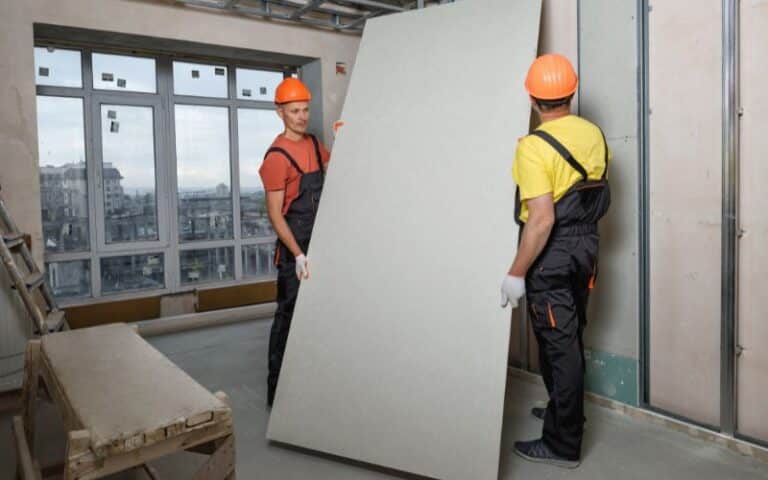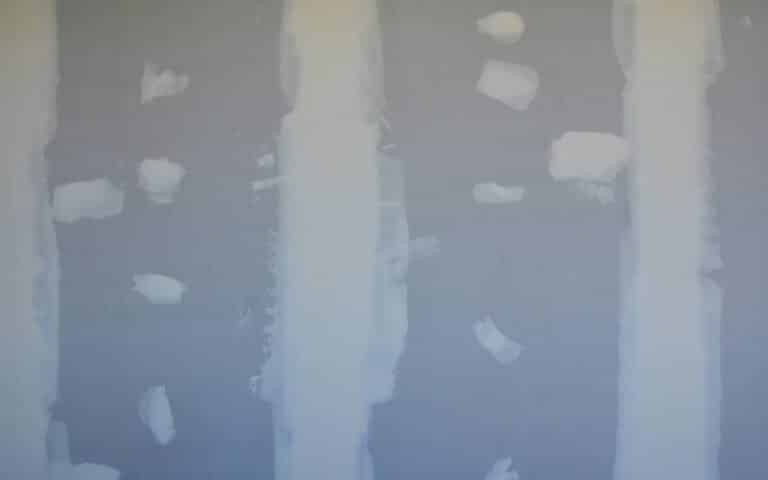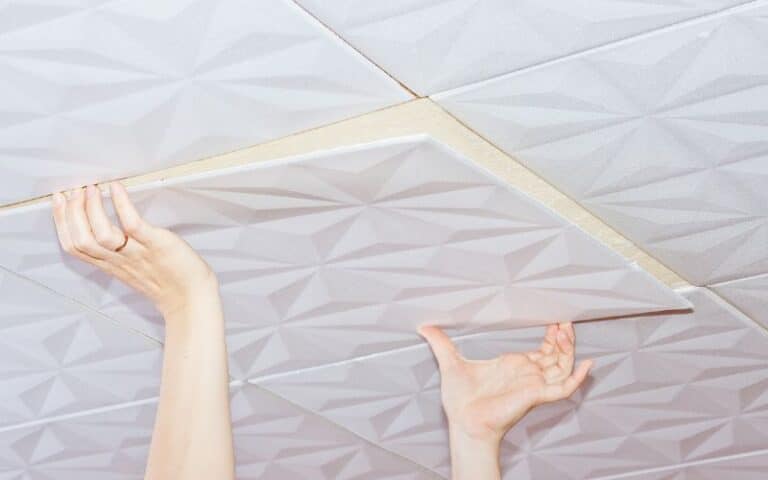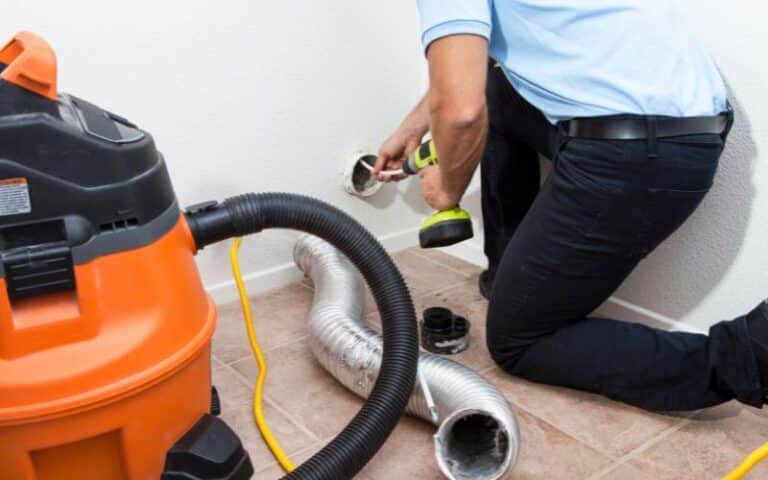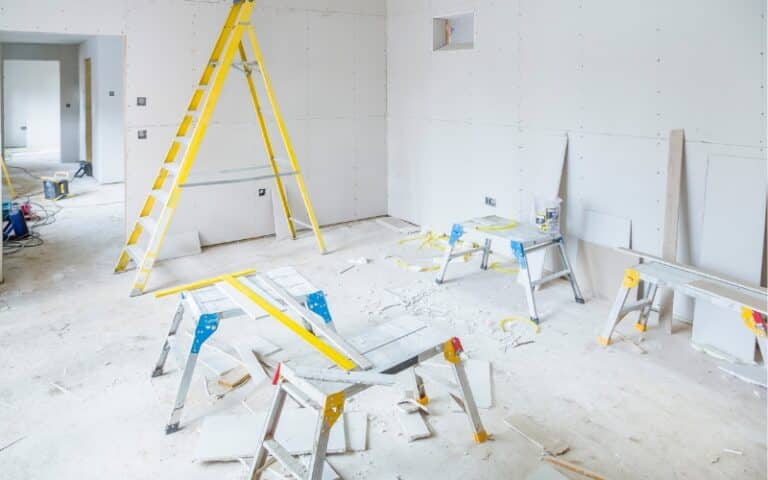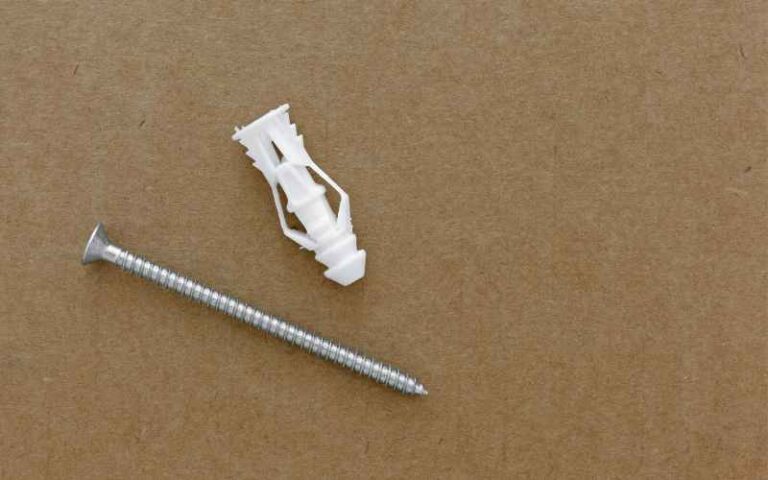Drywall is one of the most popular construction materials, almost every building you step into uses drywall.
Since several homes are made from drywall, the need to repair or clean them arises occasionally.
However, only some people are confident that bleach is a suitable cleaning agent for drywall because of how powerful bleach tends to be.
If you’re wondering whether bleach is safe for use on the drywall in your home, you’ll get all the correct answers here.
You can use bleach on drywall, but you must be cautious and dilute one equal part bleach in three parts water before use. However, most people use bleach on drywall to kill mold, but bleach is not effective for use on drywall. Alternatively, vinegar, baking soda, and hydrogen peroxide are best for cleaning your drywall.
In this article, I will explain if bleach can be used on drywall and how to get rid of mold on drywall.
You’ll know the best options for cleaning dirt or mold off your drywall and the necessary precautions.
Ready for a Drywall Quiz?
Can Bleach Be Used on Drywall?

Bleach can be used on drywall, but there are other reliable cleaning agents for removing dirt or mold on your walls.
Despite popular opinion, bleach doesn’t kill mold permanently on drywall; it is a temporary and unhealthy option for cleaning drywall.
Bleach is acidic and potent; your walls risk getting damaged if it is not watered down properly before application.
Using bleach on your drywall is also harmful because it could leave behind toxic fumes irritating the eyes, lungs, and skin.
However, bleach gives a false illusion of killing mold when used on drywall.
Unfortunately, diluted bleach removes mold on the surface, but its roots are left in the wall.
Note that bleach may be effective for cleaning mold or dirt on tiles because they are non-porous, unlike drywall with a porous surface.
What Kills Mold Better, Bleach or Vinegar?
Vinegar kills mold better than bleach because it can penetrate mold roots on porous surfaces, unlike bleach.
When you use bleach to remove mold on your walls, it will return after a while because it only kills mold spores.
The chemical structure of bleach does not allow it to penetrate porous surfaces; however, several people are wrongfully convinced that it is effective.
Bleach could cause more harm than good in killing mold in your home, so it is best to use vinegar or other non-toxic options.
While bleach and vinegar can kill mold, the latter is safer and more effective, so vinegar is the best option.
Below are the reasons why you shouldn’t kill mold with bleach;
#1. Bleach is a Toxic Chemical
Bleach is highly hazardous; it is made from dangerous chemicals, such as sodium hypochlorite, that are toxic to the environment.
It would help if you were cautious while using bleach; inhaling too much bleach could irritate the skin, eyes, mouth, or lungs.
Gasoline and bleach are categorized under the same level of toxicity to prove how corrosive it is.
Bleach is also an unhealthy chemical for pets to inhale, polluting the air and environment after frequent use.
#2. Bleach Doesn’t Kill All Mold
Bleach is an unreliable cleaning agent for killing mold because of its chlorine and water composition.
You need to dilute bleach heavily with water to avoid damage to the surfaces it comes in contact with asides from its original water composition.
However, this makes bleach 90% water and 10% chemicals, and the mold roots soak up the water content and grow stronger after the chemicals evaporate.
In the end, bleach is more likely to encourage a comeback of worse mold growth than kill the mold.
On the other hand, Vinegar is an affordable, natural, and healthy cleaning agent that permanently kills mold on all surfaces.
Unfortunately, vinegar may result in discoloration when used on tiles, but it doesn’t cause harm to walls and wooden surfaces.
Below are the reasons why you should kill mold with vinegar;
#3. Vinegar Kills Mold Permanently
Vinegar is a natural and rich source of anti-fungal and antibacterial properties; these natural abilities allow the vinegar to fight off mold permanently.
White vinegar also contains between five to eight percent acetic acid, which can easily disrupt the growth of microorganisms such as mold when applied.
In addition, vinegar is safe for use on most surfaces in the home, and it successfully kills mold spores and their roots.
#4. Vinegar Is a Non-Toxic Cleaning Agent
Vinegar is one of the best cleaning agents because, despite its acidic components, it is healthy enough to be used frequently.
Therefore, it’s best to use vinegar to kill mold because it poses no threat to your health or environment.
Below is a table that highlights the differences between using bleach and vinegar to kill household mold;
| Vinegar | Bleach |
|---|---|
| US EPA approves vinegar for killing mold. | Bleach is discouraged by US EPA for killing mold. |
| Vinegar kills mold on porous and non-porous surfaces. | Bleach only kills mold on porous surfaces. |
| Vinegar doesn’t cause irritations when it’s inhaled. | Bleach may cause skin, eyes, or lung irritation when inhaled |
| Vinegar kills mold from the roots. | Bleach kills mold on the surface and may encourage new mold growth. |
How Do You Get Rid of Mold on Drywall?
You can quickly get rid of mold on the drywall in your home by applying a vinegar mixture to the affected areas on the wall.
Mold is caused and bred by moisture, so as soon as you notice it, dry the moisture on your drywall.
After you’ve successfully gotten rid of the moisture-breeding mold, you can follow the instructions below to get rid of the mold.
Below are the steps for getting rid of mold on drywall with a vinegar solution;
- First, open your windows to get the affected area ventilated while you work on it.
- Secondly, add one part of vinegar mixed with equal water into a spray bottle.
- Next, spray a minimal vinegar solution on the affected area and avoid drenching the wall.
- After spraying the drywall, scrub it thoroughly with a brush until there is no mold or discoloration.
- Next, dry out the area or the entire room with a standing fan directed at the affected spot.
- Lastly, apply stain-blocking paint to cover the previously mold-infested spot.
What Spray Kills Mold on Drywall?
The RMR-86 instant mold and mildew stain remover spray is a potent cleaning agent that can eliminate mold on your drywall.
This disinfectant is a great solution for mold that doesn’t expose you to toxic chemicals and gives you satisfactory long-term results.
RMR-86 mold and mildew spray can be used for all surfaces in the house, but it is a particularly effective option for cleaning your drywall.
Interestingly, you don’t have to scrub your drywall or other surfaces after spraying the RMR-86 mold spray; the discolored stains gradually disappear.
Below are the advantages of using the RMR-86 mold and mildew spray on your drywall;
- It gets rid of the damp and musty odor of mold or mildew.
- It kills mold from the roots and prevents the regrowth of new mold.
- It deep cleans your wall to get rid of mold stains.
- It doesn’t contain any toxic chemicals.
How Do You Deep Clean Drywall?
You can deep clean your drywall using water, a dry towel, a washcloth, mild dish soap, and a cellulose sponge.
Drywall does not require potent acidic cleaning agents to be deep cleaned because it is porous and reacts negatively to some chemicals.
However, because drywall tends to gather dust, several people assume that it requires strong disinfectant to be deep cleaned.
The only situation where disinfectant sprays are helpful on drywall is while you’re getting rid of mold or mildew in your home.
You can successfully deep-clean your drywall at home with simple instructions; ensure that all steps are followed.
Below are the steps for deep cleaning your drywall;
- Begin by placing a towel or mat under the drywall you’re working on to avoid getting dirt, water, or soap on the floors or carpet.
- Secondly, dust the wall thoroughly using a duster or a dry rag. You can also use a vacuum with a duster feature.
- Next, use a damp cellulose sponge to wash the wall gently; you can use a spray bottle to add water as you scrub.
- After this, soak a washcloth lightly in mild dish soap and scrub the wall in small sections until you’re done.
- Lastly, dry your wall thoroughly with a microfiber cloth and ensure no leftover dish soap.

